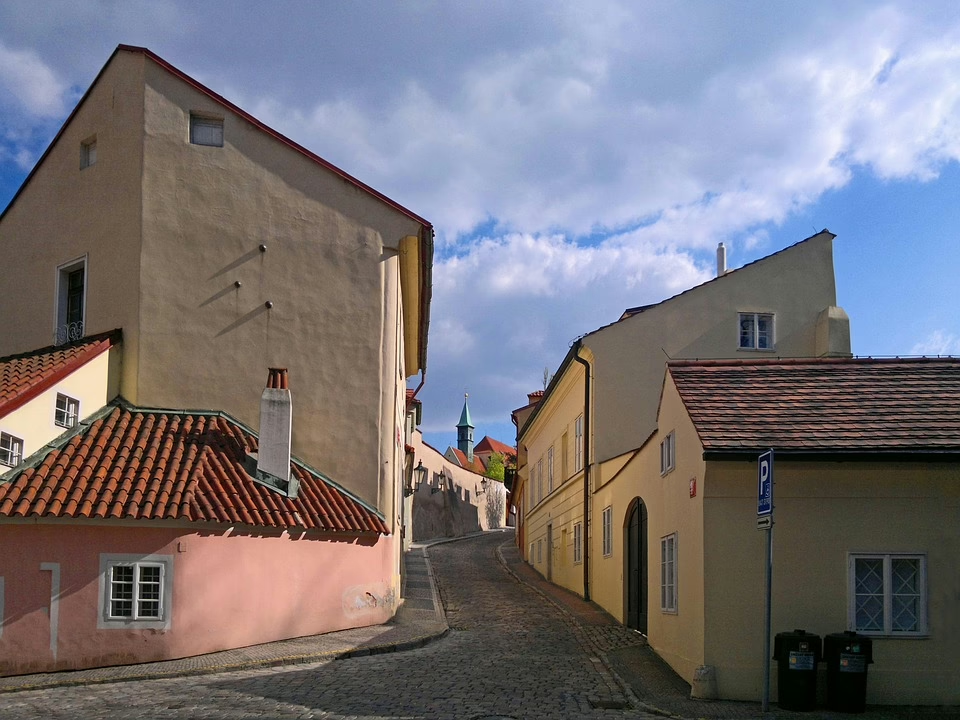Uncovering the Silk Road: The Impact of Trade on Global Cultures
Introduction
The Silk Road, an ancient network of trade routes that connected the East and West, played a critical role in shaping the civilizations and cultures that emerged along its path. This corridor of commerce facilitated not only the exchange of goods but also the transfer of ideas, technology, and cultural practices. Spanning over 4,000 miles, the Silk Road influenced regions from China to the Mediterranean, enabling interactions that would lay the groundwork for global interconnectedness. This article explores the multifaceted impact of trade along the Silk Road, tracing its implications on art, philosophy, religion, and social structures.
Historical Background
The Origins of the Silk Road
The term “Silk Road” was coined in the 19th century, referring specifically to the lucrative trade in silk that was one of the most sought-after commodities in ancient times. However, the network existed long before this designation, beginning around the 2nd century BCE during the Han Dynasty in China. The establishment of this trade route was a strategic response to economic demands, aiming to foster trade with Central Asia and beyond. Over centuries, the Silk Road expanded, incorporating various routes through deserts, mountains, and plains, facilitating not only trade but also cultural exchanges that would have profound effects on the societies it connected.
Major Routes and Key Traders
The Silk Road was not a single road but a series of interconnected paths. Major routes diverged across the Central Asian steppes, the deserts of modern-day Iran, and the mountains of Afghanistan, ultimately reaching ports in the eastern Mediterranean. Key trading cities such as Samarkand, Bukhara, and Constantinople thrived as economic hubs, nurturing the exchange of goods, languages, and innovations.
Traders along these routes were not merely merchants; they were cultural emissaries. They carried textiles, spices, precious metals, and other goods, as well as knowledge about diverse cultures and practices. This cross-cultural interaction laid the groundwork for what would eventually become global trade networks.
The Exchange of Goods
Commodities Traded along the Silk Road
While silk was the most famous product, a myriad of goods was exchanged along these routes. The trade included:
- Silk: Produced in China, silk was highly coveted in the West for its texture and beauty.
- Spices: Pepper, cinnamon, and cardamom flowed from India and the islands of Southeast Asia, greatly influencing culinary practices.
- Precious Stones and Metals: Gold, silver, and gemstones were powerful symbols of wealth across cultures.
- Textiles: Wool, cotton, and linen fabrics were integral to trade, with different regions specializing in various textile production techniques.
The Economic Impact of Trade
Trade along the Silk Road contributed to the rise of city-states and empires. Cities like Samarkand and Tashkent flourished economically, becoming melting pots of cultural exchange. The multiplication of trade networks enabled not only the distribution of goods but also the sharing of innovations in technology, such as papermaking and agricultural techniques.
The economic benefits were profound, leading to increased urbanization and the rise of a merchant class that wielded substantial power. Furthermore, new monetary systems emerged to facilitate trade, demonstrating the nuanced economic transformations ignited by these interactions.
Cultural Exchange
Art and Architecture
The Silk Road was a conduit for artistic influences, leading to a rich tapestry of styles that blended elements from various regions:
- Buddhist Art: The spread of Buddhism from India to China facilitated the interchange of artistic traditions. For example, the Greco-Buddhist art of Gandhara emerged as a distinct style characterized by its blending of Hellenistic and Indian forms.
- Islamic Architecture: The incorporation of motifs from different cultures can be seen in the mosques and palaces built along the Silk Road, where elements like the dome and minaret were influenced by diverse architectural styles.
Language and Literature
Trade interactions fostered linguistic exchanges that enriched the languages of the Silk Road’s participating cultures. As merchants communicated across regions, elements from different languages merged, leading to the development of pidgins and trade languages. Manuscripts and literary works also circulated, including important texts from various traditions that influenced education and philosophy.
The spread of ideas was not limited to tangible commodities. Philosophies such as Neo-Confucianism, Zoroastrianism, and various schools of thought caught wind along trade routes, enriching intellectual discourse.
Religion
Religious beliefs were essential components of cultural exchange. The Silk Road facilitated the movement of major religions, including:
- Buddhism: Originating in India, it spread into Central Asia and China through traders who carried sacred texts and images.
- Zoroastrianism: This ancient religion influenced cultures throughout Persia and beyond, impacting both Islamic and Christian traditions.
- Islam: The rise of Islam in the 7th century saw rapid proliferation along the trade routes, leading to the establishment of cultural and educational centers in cities like Baghdad and Cairo.
The interactions across cultures led to syncretism, where elements from different religious traditions blended to create new forms of worship and spiritual practices.
The Social Impact of Trade
Class and Society
The emergence of a merchant class radically transformed social structures. Traditional hierarchies began to shift as merchants gained wealth and influence. In some regions, this led to the emergence of new social classes comprising traders and artisans. Conversely, established aristocracies grappled with the newfound influence of these economic players, leading to shifts in governance and societal norms.
Women in Trade
Trade along the Silk Road also had implications for gender roles. While predominantly male-dominated, women participated in trade, especially within local contexts. They often played essential roles in textile production, notable in regions like Central Asia where women were skilled artisans.
Moreover, marriage alliances arranged for trade purposes brought about changes in social status and opportunities for women, opening pathways to education and leadership.
The Decline and Transformation of the Silk Road
Shifts in Trade Routes
By the late medieval period, the rise of maritime trade routes diminished the significance of the land-based Silk Road. The Age of Exploration ushered in new trade routes that transformed global commerce once again. European nations began to look toward the oceans for new opportunities, diminishing their reliance on overland trade networks.
Legacy of the Silk Road
Despite its decline, the legacy of the Silk Road remains evident today. The cultural exchanges and innovations that occurred along these routes laid foundations for the modern world. The principles of trade established during this era—diversity, connectivity, and mutual dependence—continue to resonate in contemporary international commerce.
Conclusion
The Silk Road’s impact on global cultures remains a testament to the power of trade as a catalyst for interaction and development. Through the exchange of goods, art, literature, and ideas, this ancient network reshaped societies across continents. As we navigate an increasingly interconnected world, the lessons from the Silk Road’s history offer invaluable insights into the complexities of trade, culture, and human interaction.
In conclusion, the Silk Road serves as a powerful reminder that trade extends beyond mere economics; it fosters the fabric of global culture, creating interwoven identities that continue to evolve in response to changing circumstances. Understanding this rich tapestry of connections can enhance our appreciation for cultural diversity and encourage more empathetic and informed global interactions in the future.
References
- [1] Whitfield, Susan. The Silk Road: Trade, Travel, Wealth, and Wisdom. British Library, 2004.
- [2] Liu, Xinru. Silk and Religion: An Exploration of Material Life and the Power of Belief in China and the West. Oxford University Press, 2010.
- [3] Pomeranz, Kenneth. The Great Divergence: China, Europe, and the Making of the Modern World Economy. Princeton University Press, 2000.
- [4] Frankopan, Peter. The Silk Roads: A New History of the World. Bloomsbury, 2015.
- [5] Rawski, Evelyn S. The Last Emperors: A Social History of Qing Imperial Institutions. University of California Press, 1998.
This article offers a condensed overview of an immense subject, and further research would yield deeper insights into specific aspects of trade’s cultural impact along the Silk Road. As we continue to study this historical phenomenon, we unlock understandings that are vital to appreciating our interconnected world today.
























Add Comment